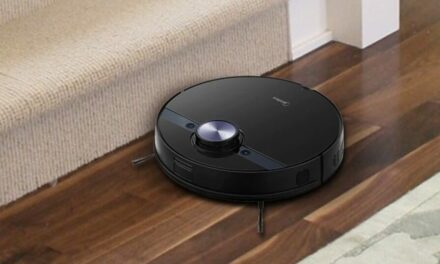
We are building a Xiaomi smart home, Part 3 - Xiaomi Gateway

We are finally getting into construction in practice, stay tuned!

contents show
Introductory
This article is the third in our smart home series, the links to the first two will be below. Even if you don’t read the pleasure, we would definitely like to bring the Xiaomi Smart Home Primer to your attention, because without it, not everything you can read in this article may be clear.
When I came up with this series of articles, I had a clear idea of the structure, but as the tools I ordered came in line, as I began to put the system together, the structure of the articles became more and more fragmented in my head. It is so interconnected with all other components in the system that it is very difficult to separate them by function. To give an example, at Gateway, I would have to show you how to add sensors and set up different events, but until I get to the sensors in the articles, I can’t do that. Of course, it’s easy to say that we’ll put the sensors in this article then, but with that power, the switches, their smartness, and everything else would have to get here, and the article wouldn’t stop at less than 30 pages.

So, with this long introduction, I’ll apologize in advance why there will be a little little description for some features in some places. Where you feel there could have been more, we’ll turn back later, but if you don’t get it, you can feel free to ask in the comments.
Xiaomi Mi Home
Before we get into the Gateway presentation, let’s dwell on the Xiaomi smart home for a few sentences. It really isn’t much, just that you don’t have to worry about tuning basic functions during the settings you’ll introduce later.
You can find the program in the online store assigned to your phone, with the exception of the declining group of users of the mobile version of Windows.
After installation, there are some things you need to configure.
- You will need a Mi account, ie you will need to register a username and password, without which you will not be able to use the program.
- After installation, set the language of the program to English and the location to Mainland. The latter is the Chinese server, but so far only here is it guaranteed that you will be able to add all the devices to the system.
Adding new devices to your system is essentially the same for your WiFi widget. There is an automatic search mode if we find the new component there, give it which WiFi connection to use (this is your home WiFi) and then let it connect. If the connection fails, in most cases you will have trouble setting up the router's DNS. For me, Digi provides, the default DNS in their router is the router's own address, I remember 192.168.0.1. This is not good for us, we need to migrate DNS to Google servers, so we use 8.8.8.8 for primary DNS and 8.8.4.4 for secondary.

Once the device is connected, you need to specify which room in your apartment you are using, so you are essentially grouping your smart devices. (living room, bedroom, etc.)
You can expose the new tool by clicking the Manage button on the home page of the program. by opening the Manage tab, you select the device (a small green check mark appears next to it), then it will be out on the home page of the smart home app as well.
If you don’t understand something, be patient, sooner or later it will become clear. ?
Xiaomi Gateway
If you’re not angry, I’m not writing about packaging right now, and I’m not going to tell you what it looks like, you can see that in the pictures. What’s important is that it’s not an EU plug, so a regular converter needs to be assigned to it, fortunately it’s only a $ 1-2 cost.
Installation is easy, we plug it in, find it in the Mi Home app, tell it which WiFi network to use, and we're done.
The Xiaomi Gateway is described in many articles as the soul or center of the Xiaomi smart home, though this is not, or at least not entirely, true. The Gateway is also just a device in the system and in many cases there is no need to purchase it. It is often written that all kinds of automatisms can be set through this, but this is only partially true, because there are many types of automatisms, and the Gateway is not close to everything. I do that if I want to set up automation for an incoming call to my phone, for example, to turn off the TV, I won’t need the Gateway.

Why is this still said to be the soul of the system? Because of Zigbee devices. A Gateway is actually a gateway between a group of devices that work with two types of wireless solutions. Zigbee devices, like some smart connectors, wall switches and sensors cannot communicate with the system otherwise than through a central unit. This will be the Gateway. Again, I just need to refer back to the article based on smart home, in which you could learn a little more about how Zigbee networks work.

So, the point is that the word Gateway covers the role of this device in the Xiaomi smart home system very well. It’s not a hub literally, it’s more of a gateway, a gateway between WiFi and Zigbee devices. But it is also a node, but only on the side of the Zigbee network.
Of course, at Xiaomi, if you already need a Gateway in the system, they tried to give it extra, useful features. These can be grouped into three groups, such as safety, entertainment and lighting. For the first two, the engineers installed a speaker, and for the last, an RGB LED lighting.
Security
In terms of security features, the Gateway will be a real hub, in fact the soul of the system. The simple reason for this is that the door and window sensors and motion sensors responsible for security tasks all operate on a Zigbee network, so they need a gateway provided by the Gateway, or rather a gateway. Another question that Xiaomi says, if this device is already here, if we’ve already put a speaker in it, why not have this siren at the same time? They’re right, he can sound deafening, maybe the only negative is that if he finds the burglar and pulls him out of the outlet, he’s there to make an impact. Luckily, you can send an alert to your phone at the same time as the alarm.

That is, the center of security functions will actually be the Gateway, receiving the signals from the sensors, sending us an alarm, turning on the siren, for which you use the built-in speaker.
Entertainment
Xiaomi used the built-in speaker here and the internet available over a WiFi connection, with which we can listen to online radios. As with most Xiaomi devices, the localization here is Chinese, meaning that the available radios are also Chinese. More precisely, they would be Chinese if there weren’t so many users in other countries who are not at all interested in Chinese music. Fortunately, there are many, and there is a solution to include more international taxes, such as domestic taxes.
There are two things you need to do to listen to home radios as well.
- Download the app called DNS Changer for your Android phone (I don't know if there is one for iPhone, if so, please write to me so I can complete the article)
- In the application, select the Custom DNS function and enter 82.146.38.202 as the primary DNS and 8.8.8.8 as the secondary DNS.
You can now go back to Gateway settings and find a bunch of new channels on online radios.
Lighting

Lighting with RGB LEDs can also be found in the Xiaomi Gateway. We can control the brightness, color, or otherwise fine tune the lights. For example, we can set which days of the week, in what time zones within which days to give light. For example, I love the dark blue light at night, absolutely not disturbing. I set the lights to turn on a light blue light at nine in the evening, switch from dark to 11 in the evening, and it would light up until five in the morning.
Application
So the Xiaomi Gateway, as it seems so far, is not something unearthly, quite a simple structure with simple functions. Another issue is that if the entire system comes together, an almost infinite amount of smart home functions will be available after setting up the various automations, but more on that later. Now let’s see a lot of pictures so we can set up Gateway features!
When you first open the Gateway software, you will receive this image above (of course there will be nothing in the Messages section). The large green part of the top can be scrolled. As you can see, the first window is used to activate security features. Scrolling one step further is the blue interface for launching the internet radio, from here you can directly access your favorite radios from the small arrow below the big launch button, you can switch between stations on the right, you can control the volume with the small button on the left. The third window is for lighting, color and brightness can be selected.
 |  |
The settings, as with all Mi Home devices, are accessed by clicking on the top three dots on the right. Don't even look at the About button unless you know Chinese. The Automation section, like the other tools, is used to set up automations, we will turn back here.
A General Settings we find several things below.
- We can change the name of the device, this name will be seen in Mi Home
- In the security setting, you can password the device
- Share device, as its name suggests, is used to share a device. Here, it’s important to know that in order to share control of a device with someone else, you need two things. One is to have a Mi account, the other is to have the Mi Home application installed on it on the same server, this is the Chinese server.
- At Manage Locations, you can tell which room in your house your device is in, so you can organize your smart devices into groups.
- Check for firmware updates, no explanation required
- Remove device is clear
- Use the add home screen shortcut button to place a shortcut on the desktop to quickly access the device.
- Network info is clear again
- We can send a message to the developer in the feedback section, I have never tried this before.
The last point in the settings in the Help can be found here and you can ask for help if you know Chinese will definitely be helpful.
The setting options are not over here. When you start the program, you will find yourself on the Gateway “tab” by default, but there is also an Auto and a Device tab.
Az Cars The following features welcome us:
- Alert - settings related to the alarm, timing, alarm volume and sound, and other functions. For example, you might choose to bark at a dog if I were a burglar, you would be bored if you barked while sneaking.
- Induction night light - in combination with a motion sensor, the Gateway can operate as a directional light, you can set a fixed interval when it is lit, and in case of motion detection, how long it should turn off
- Timer Colored lamp - here you can set the light of the time at the given time, broken down by day or hour
- Lazy alarm clock - the lazy enemy is this alarm function, you can't stop it from bed
- Dorbell - If you use the Gateway as a bell, here you can set the switch to ring us, the sound of the ring, and the volume.
Under the settings you can see what automatic functions have been set (there will be nothing here during the first commissioning), and you can switch these functions on and off.
A Device tab is clear again, here are the devices belonging to the Zigbee network “supervised by the Gateway, here we can add new devices by clicking on the bottom + sign. By clicking on the name of each device, you can set different automatisms, for example, to connect the wall switch to the ceiling burner.
You won’t believe it, but we’ve got to the end of the setup. You will find the functions that are activated by various functions, such as the motion sensor, not here, but in the motion sensor article.
Before cutting into the summary, turn back to the Automation section. This is a section in the settings that can be found in the settings of all smart devices. Different automatisms can be set in several places, for example, what a certain lamp should do for a certain signal of a sensor. We can set both for that particular lamp and for the sensor that gives the signal. For practical reasons, I always set these at the device. True, each automatism can be given its own name, but even so, I get less confused if, for example, I specify the setting associated with the smart light at the smart light and not at the sensor that controls it. Plus, on a device like Gateway, I can see right away what I have.
In this case, different Gateway functions can be assigned to different events:
- Turn protection mode on and off
- Gateway lighting - switching on, brightness and / or color change of light
- Radio related settings - start, stop, change channel, volume control
- Play a set ringtone
Speaking of setting up automation, don’t miss a single example, one that requires nothing but your phone!
New automation can be added with the plus sign in the upper right corner. The rule consists of two parts. The first is IF or HA, the second is THEN, i.e. THEN part. We can safely interpret this literally, that is, in the first part we set what and what happens, then what happens.
For example,
- for the IF section, set When receiving calls on Mi Phones
- For the THEN part, to control radio / radio volume down
What happens then is that if we have an incoming call while the internet radio is playing, the volume will drop and we will be able to make phone calls.
Isn't that complicated? Now imagine that there are a lot of sensors in the apartment and these sensors have millions of tiny yet very useful features like the one above. Well, this will be your smart home!
overall
Although you read at the beginning of the article that we are finally really starting to build a smart home, this can only be done in part, because we will need different sensors to do the same. So, in this article, you were basically just familiar with the Gateway settings, except for setting up one of the automations associated with our phone.

You may find it strange, but the next two parts of the series have already been born, you can read it on our site for a long time. And these are none other than our writings on the wise man and the smart lamp. It was the first two smart home stuff I tried, so the first articles were born about these. Logically, after the Gateway, we have to fit them into the series, because these will be the devices we will be the first to operate with the sensors and switches.
So, if you haven’t read these old articles yet, it’s time!
The articles in our Smart Home series so far:
- Xiaomi Gateway - let's start construction! - you are reading this article
Let's shine with wisdom - Xiaomi Yeelight test with a lot of secret information!
We also tried this - Xiaomi Philips Eyecare desktop smart light
. Sweep, vacuum and even wash the Xiaomi Roborock S50 robotic vacuum cleaner
I ordered the Xiaomi Gateway from here: Xiaomi Gateway
You can get a complete smart home package here: Xiaomi Aquara Security kit
Larger security package: Xiaomi 5 in 1 security kit

























